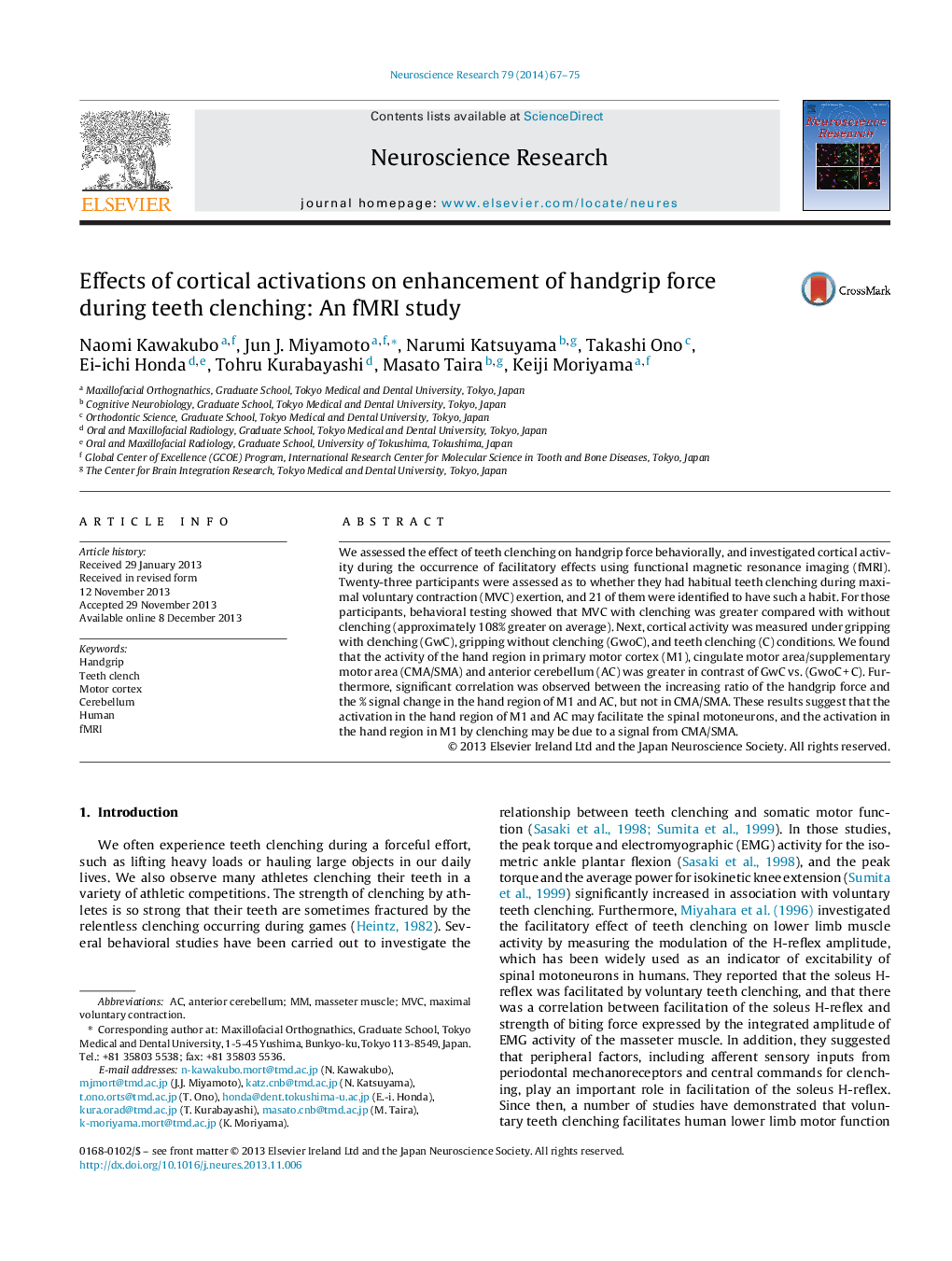| Article ID | Journal | Published Year | Pages | File Type |
|---|---|---|---|---|
| 6286331 | Neuroscience Research | 2014 | 9 Pages |
â¢The maximal voluntary contraction was enhanced by teeth clenching.â¢M1, CMA/SMA, and anterior cerebellum (AC) were activated during gripping with clenching.â¢M1, CMA/SMA and AC may be involved in the remote facilitation by teeth clenching.
We assessed the effect of teeth clenching on handgrip force behaviorally, and investigated cortical activity during the occurrence of facilitatory effects using functional magnetic resonance imaging (fMRI). Twenty-three participants were assessed as to whether they had habitual teeth clenching during maximal voluntary contraction (MVC) exertion, and 21 of them were identified to have such a habit. For those participants, behavioral testing showed that MVC with clenching was greater compared with without clenching (approximately 108% greater on average). Next, cortical activity was measured under gripping with clenching (GwC), gripping without clenching (GwoC), and teeth clenching (C) conditions. We found that the activity of the hand region in primary motor cortex (M1), cingulate motor area/supplementary motor area (CMA/SMA) and anterior cerebellum (AC) was greater in contrast of GwC vs. (GwoCÂ +Â C). Furthermore, significant correlation was observed between the increasing ratio of the handgrip force and the % signal change in the hand region of M1 and AC, but not in CMA/SMA. These results suggest that the activation in the hand region of M1 and AC may facilitate the spinal motoneurons, and the activation in the hand region in M1 by clenching may be due to a signal from CMA/SMA.
